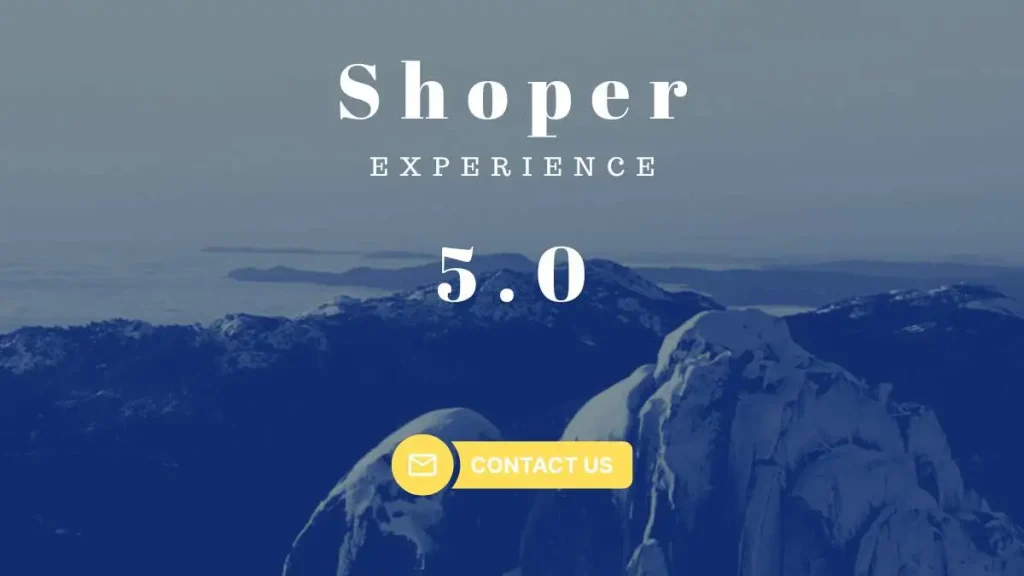This is where the concept of “Retail-tainment” comes in, a powerful strategic tool that combines retail with entertainment to transform commercial spaces into unique scenarios that captivate, build loyalty and increase sales.
What exactly is Retail-tainment?
The term retail-tainment is a creative combination of “retail” and “entertainment”, coined to define the growing trend of incorporating playful and experiential elements at the point of sale. Its main objective is to offer a sensory and emotionally positive experience that motivates the consumer to stay longer in the store, interact with the brand and, ultimately, make a purchase.
Today, consumers are not just looking to purchase products; they aspire to enjoy memorable experiences that generate positive emotions and meaningful connections with brands. This is especially true in a saturated market, where differentiation no longer depends on product or price alone, but on emotional added value.
The psychology behind the shopping experience
From a neuromarketing perspective, immersive, multisensory and fun experiences significantly impact consumer perception. Exposure to positive stimuli during the purchase process activates brain regions related to pleasure and reward, which not only drives impulse purchases, but also strengthens brand recall and loyalty.
In practical terms, integrating fun, surprising or innovative activities in retail is an excellent strategy to capture attention, arouse curiosity and generate organic conversations on social networks and digital platforms.
Key strategies for implementing Retailtainment
Design of interactive and experiential spaces.
Creating stores that are much more than just spaces to display products is essential. This involves designing interactive areas, digital or physical, where consumers can directly experience products or brand-related experiences. Examples might include technology product testing areas, smart mirrors for fashion and beauty, or product customization stations.
2. Exclusive events and creative collaborations
Organizing unique in-store events, from musical performances to workshops and exclusive talks, generates a powerful magnet of attraction. Collaborations with artists, influencers or complementary brands expand the potential audience and provide significant differential appeal.
3. Technology integration for immersive experiences
Technology is a powerful ally of retail-tainment. Augmented reality, virtual reality, interactive touch screens and mobile applications with exclusive in-store experiences are some of the tools that can completely transform the consumer experience, providing emotional and informative value.
4. Sensory Storytelling
The creation of sensory stories is key. The use of specific in-store scents, carefully selected music or scenographic lighting can transport the consumer into an emotionally engaging space that is consistent with the brand’s values.
Inspirational brand cases
Nike House of Innovation
Nike has been able to create true experiential centers, such as its flagship store in New York, where consumers can customize their athletic footwear, use smart mirrors that scan their body to recommend tailored clothing, or participate in exclusive events with famous athletes.
IKEA: Sleeping in the store
IKEA temporarily transformed its stores into authentic living spaces, inviting customers to spend the night to test its products in a realistic environment. This original campaign generated global media notoriety and a fresh, relatable perception of the brand.
Sephora and augmented reality
Sephora has innovated in the beauty sector by using augmented reality technologies to allow its customers to try different cosmetic products virtually before buying them, turning the process into a fun and personalized experience.
Common mistakes when implementing these strategies
Although the implementation of retail-tainment offers multiple benefits, there are frequent mistakes that must be avoided to ensure success:
- Lack of coherence: The experience offered must be consistent with the essence of the brand. Introducing entertainment elements disconnected from the company’s DNA could confuse the consumer.
- Ignoring the omnichannel experience: Retail-tainment is not just for physical stores. Experiences must be transferred to all digital channels to ensure a continuous and homogeneous interaction with the brand.
- Not measuring results: As with any marketing strategy, it is vital to establish clear KPIs to evaluate the real impact of retail-tainment on conversion, loyalty and brand image.
Retail-tainment in the short term
Looking ahead, here are some trends that are likely to lead the evolution of retail-tainment:
Hyper-personalization through artificial intelligence
The stores of the future will offer highly personalized experiences thanks to artificial intelligence. Advanced data collection and analysis will enable brands to tailor each interaction in real time based on individual purchase history, preferences and habits. AI will be able to predict needs before the consumer is aware of them, offering products, promotions and experiences specifically designed for each customer, significantly increasing satisfaction and loyalty.

Extreme gamification
Gamification will go far beyond simple casual entertainment, becoming a powerful tool to engage young, digital audiences. Physical and digital stores will be transformed into interactive scenarios where game mechanics, competitions and challenges provide exclusive rewards and benefits. Brands will use everything from augmented reality to full immersive experiences to deeply engage consumers, motivating frequent visits and creating an emotional and dynamic bond with the brand.
Sustainability as part of entertainment
Sustainability will no longer be just an added value or corporate responsibility but will be integrated directly into the shopping experience. Stores will implement educational and interactive activities that promote responsible and sustainable consumption. Recycling workshops, talks by environmental experts, interactive experiences with sustainable products and awareness campaigns will become key attractions, reinforcing a positive and authentic image of the brand committed to the environment.
Why Retailtainment?
The implementation of retail-tainment is not just a passing fad, but a natural evolution in the relationship between consumer and brand in the physical environment. Its positive impact on sales, loyalty and engagement is more than proven. The key to success lies in the creativity and authenticity with which each company implements its strategies.
Brands capable of transforming their stores into authentic experiential spectacles will not only stand out from their competitors, but will create strong and lasting emotional bonds with their consumers. Is your brand ready to make the leap into retail-tainment?




